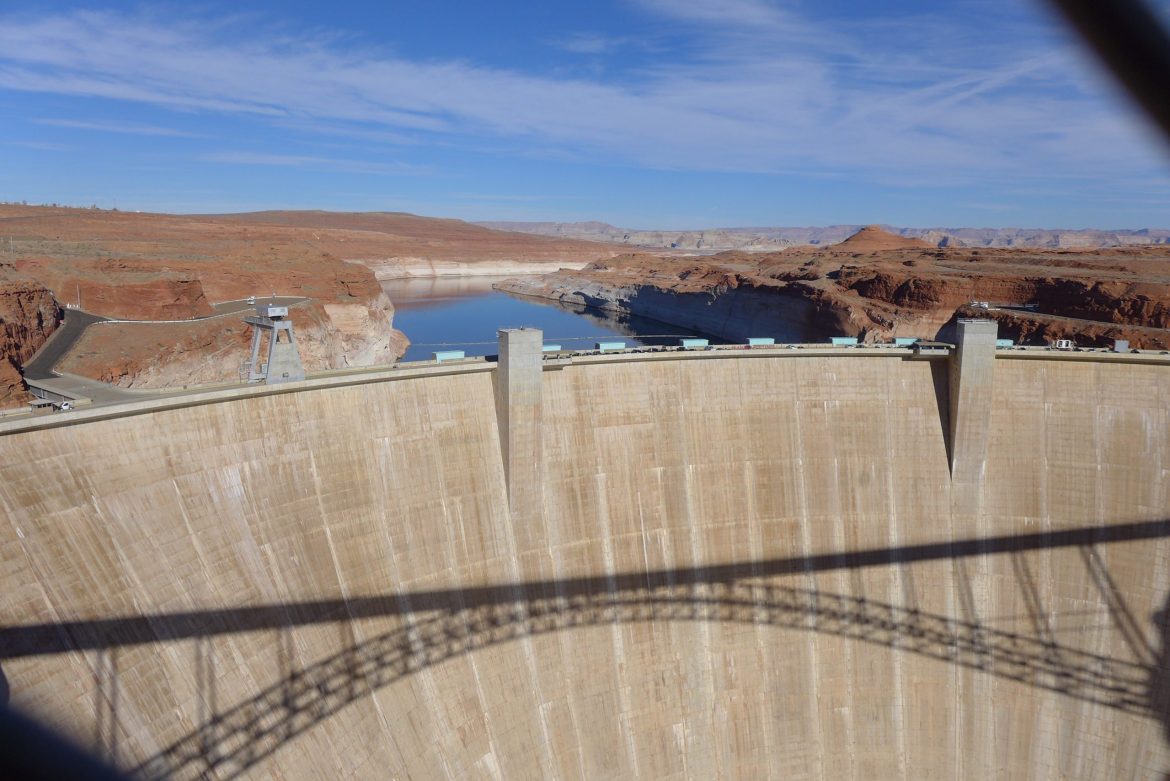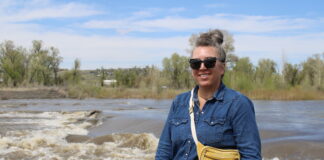
As water experts gathered this week for an annual conference in Boulder, it was with the sobering knowledge that despite everything they have done so far, it is still not enough to keep the Colorado River system from crashing.
Federal officials this week made the earth-shaking announcement that the seven basin states must quickly conserve an enormous amount of water and threatened unilateral action if they do not. U.S. Bureau of Reclamation Commissioner Camille Touton, testifying at a U.S. Senate hearing on drought on Tuesday, said an additional 2 to 4 million acre-feet of conservation was needed just to protect critical reservoir levels in 2023.
Department of Interior Assistant Secretary for Water and Science Tanya Trujillo reiterated this position in a talk at Thursday’s Conference on Natural Resources at the University of Colorado Law School. She said the federal government has the responsibility and authority to take action to protect the system and the infrastructure if the states can’t reach an agreement on their own.
“We are facing the growing reality that water supplies for agriculture, fisheries, ecosystems, industry and cities are no longer stable due to climate change,” Trujillo said. “Our collective goal is to be able to very quickly identify and implement strategies that will stabilize and rebuild the system so we don’t find ourselves constantly on the brink of a crisis.”

Worsening conditions
Over the past year, water managers have implemented measures to keep water levels from falling below critical thresholds for hydropower production in the nation’s two largest reservoirs, including a plan for holding back water in Lake Powell, emergency releases from upstream reservoirs, and a much-celebrated plan to save 500,000 acre-feet in Lake Mead.
The actions taken in the 2022 Drought Response Operations Plan will add about 1 million acre-feet, or 16 feet of elevation, to Lake Powell.
But these actions are not enough.
“It’s buying us a bit more time, but not much,” said James Prairie, the upper Colorado basin research and modeling chief for the Bureau of Reclamation.
Prairie kicked off the conference by sharing numbers from the Bureau’s June 24-month study, which predicted that 2022 will be another anemic year for spring runoff into Powell at just 55% of average. Total Colorado River system storage stands at about 35% full; last year at this time it was about 42% full. In March, Lake Powell dipped below a critical threshold of 3,525 feet, just 35 feet above the minimum level needed to generate hydropower for millions of people in the southwest.
The announcement of what one water expert dubbed the “2-to-4-million-acre-foot challenge” overshadowed many of the conference’s planned topics and left some presenters scrambling to change their talks or at least their tone. Debating the finer points of the Colorado River Compact, which divided the waters between the upper and lower basin states and marks its 100th anniversary this year, all of a sudden took a backseat.
“Everything has changed beneath our feet with Commissioner Touton’s announcement Tuesday,” said author and conference moderator John Fleck.
Touton gave the states until Aug. 16 to figure out a path to conservation before Reclamation would take unilateral action to protect the system. That’s when Reclamation’s August 24-month study comes out, which lays out a plan for how the agency will operate its reservoirs in the coming year.

Upper basin contribution
Federal officials made it clear that conserving the 2 to 4 million acre-feet is the responsibility of all seven basin states: Colorado, Utah, New Mexico, Wyoming, Nevada, California and Arizona. But they were not prescriptive about how to do it or how the shortages should be shared; that’s for the states to figure out among themselves.
“Do we have any specific recipe in mind? The short answer is no, we don’t have a formula already pre-baked and pre-worked,” Trujillo said. “We are likely going to be in a situation of doing things we have never done before.”
How Colorado will conserve is unclear, especially since the state’s exploration of a demand management program that would have paid water users to cut back has been shelved for now. The program proved a hard sell, especially for some agricultural water users who questioned why Colorado should send water to prop up Lake Powell and fix a problem that is caused by what they say is over-use in California, Nevada and Arizona.
The compact divided the flows of the Colorado River equally between the upper and lower basin at 7.5 million acre-feet each. But the upper basin has never come close to using its full allocation, while the lower basin, by some estimates, uses more than 8.5 million acre-feet. Meanwhile, climate change and a two-decade-long drought have diminished river flows basin-wide in the 20th century by about 20%; scientists say about one-third of that loss can be attributed to warmer temperatures.
Chuck Cullom, the executive director of the Upper Colorado River Commission, said that while all seven states share the resource of the Colorado River and have an obligation to contribute to conservation, most of the water savings should come from the lower basin.
“Everyone needs to participate, but the vast majority of the effort needs to come from the lower basin because that’s where the preponderance of the uses are,” he said.
Upper basin water managers point to the emergency releases of 161,000 acre-feet last year from Blue Mesa, Flaming Gorge and Navajo reservoirs as a way they have responded to the crisis. But that decision was made unilaterally by Reclamation and is not the same as conservation.
Colorado’s commissioner to the UCRC and head of the Colorado Water Conservation Board Rebecca Mitchell did not give specific examples of where Colorado could increase its water conservation, but said the state will continue to work with other basin states, the federal governments and tribal nations to find solutions.
“Colorado water users are on the front lines of climate change,” Mitchell said in an emailed statement. “We are continuing to work closely with our federal and state partners across the basin to address water shortages.”
Fleck ended Thursday’s session by striking an emotional tone that captured the mood in the room. We are at a moment of reckoning and realizing the West of the future will look much different than it does now, he said.
“We are in a moment of grieving,” he said. “The tools we developed were not enough.”
This story ran in the June 17 edition of the Vail Daily, the June 21 edition of The Aspen Times, the Craig Press, the Steamboat Springs Pilot & Today, the Glenwood Springs Post-Independent and the Aurora Sentinel.
The Water Desk’s mission is to increase the volume, depth and power of journalism connected to Western water issues. We’re an initiative of the Center for Environmental Journalism at the University of Colorado Boulder. The Water Desk launched in April 2019 with support from the Walton Family Foundation. We maintain a strict editorial firewall between our funders and our journalism.





